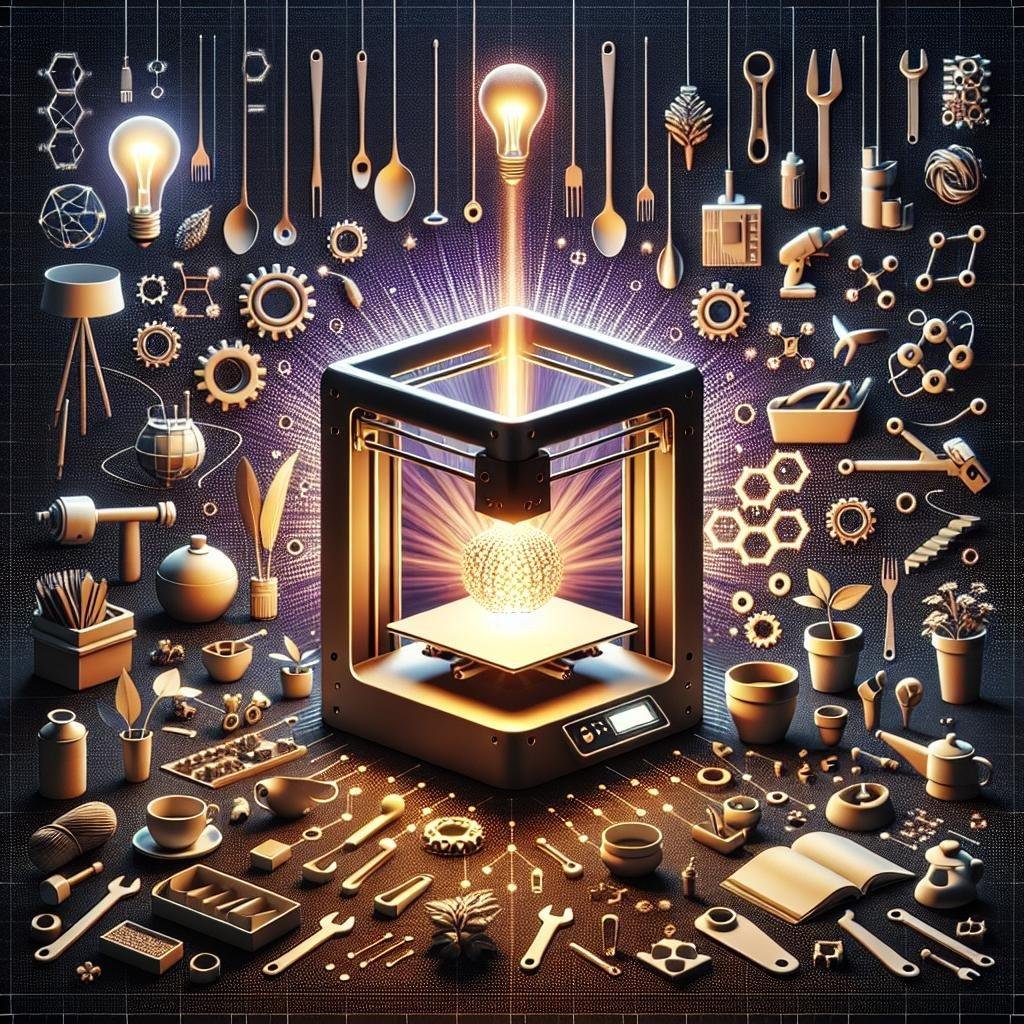Ever found yourself staring at a broken spatula, wishing you had a magical gadget to make a new one? Or maybe you’ve dreamt of designing a unique lamp that’s entirely your own creation? Welcome to the fantastical world of 3D printing—where imagination materializes and household items transform from mere ideas into tangible treasures. In this friendly guide, we’ll embark on an exciting journey through the basics of 3D printing, unlocking the secrets to creating everything from everyday tools to quirky home decor. So, grab a cup of coffee, settle in, and get ready to turn your home into a DIY paradise, one layer at a time!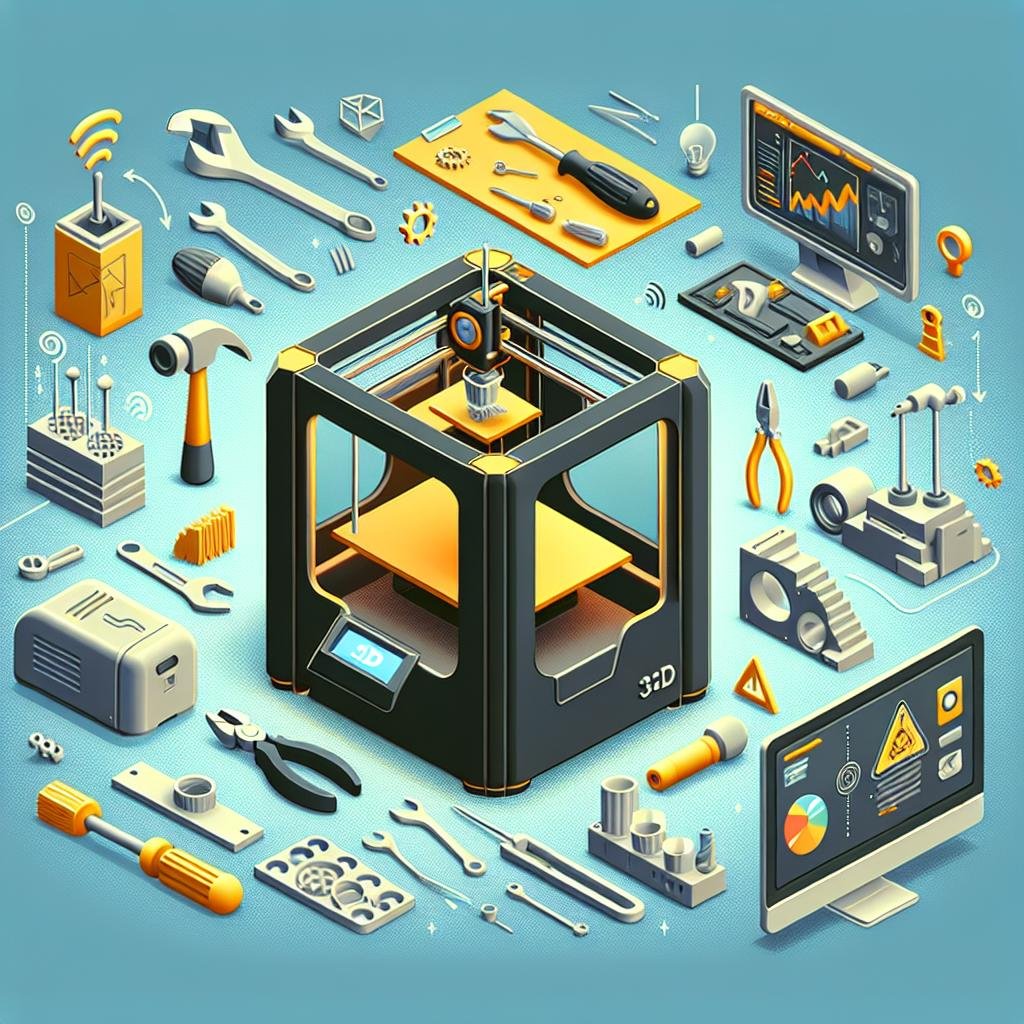
Perfecting Your 3D Printing Setup: Tools and Tips for Success
One of the most essential steps to an optimized 3D printing experience is having the right tools and knowing how to use them efficiently. Here’s a handful of must-have items for your workspace:
- Calipers: Precision is crucial, and digital calipers help in measuring dimensions accurately.
- Cleaning Kit: A set of fine brushes and isopropyl alcohol will keep your printer nozzle and bed free of debris.
- Glue Stick: Ensures better adhesion of prints to the build plate, reducing warping.
- Deburring Tool: Handy for smoothing out rough edges on your printed objects.
In addition to the tools, consider these tips for an improved 3D printing experience:
- Proper Bed Leveling: A perfectly leveled bed is fundamental. Regularly check and adjust the bed for consistent print quality.
- Optimize Print Settings: Tailor print speeds, temperature, and layer height to the material you’re using for best results.
- Use Supports Smartly: Add supports only where absolutely necessary to save material and reduce post-processing time.
- Regular Maintenance: Keep your machine well-maintained by lubricating moving parts and checking for firmware updates.
| Item | Purpose |
|---|---|
| Calipers | Accurate measurements |
| Cleaning Kit | Nozzle and bed maintenance |
| Glue Stick | Better print adhesion |
| Deburring Tool | Smoothing edges |
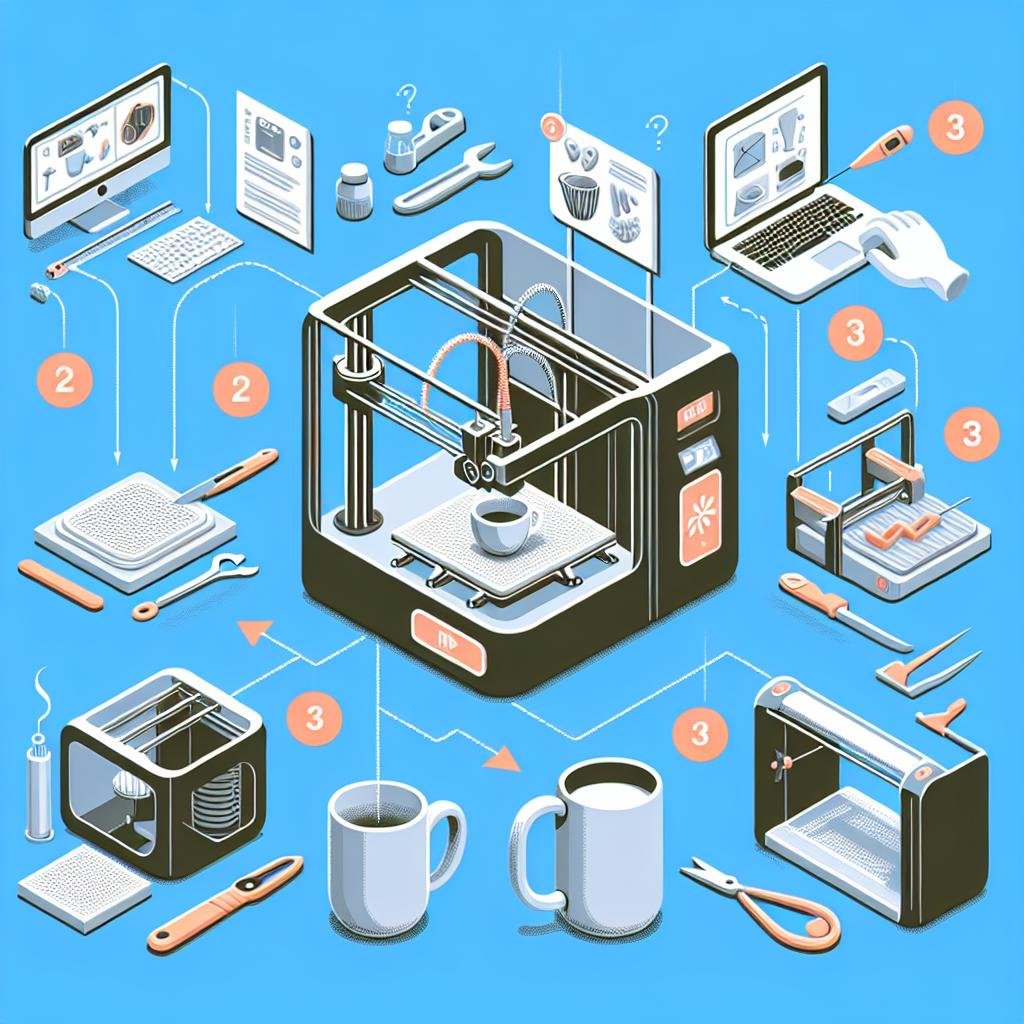
Choosing the Right Materials: PLA, ABS, and More
When it comes to filament types for 3D printing, choosing the right material for your household items and tools can make all the difference. PLA (Polylactic Acid) is a favorite among beginners due to its ease of use and eco-friendliness. Made from renewable resources like corn starch, it’s both biodegradable and produces less odor. However, while PLA is great for items like organizational tools, decorations, and non-load-bearing parts, it isn’t the best choice for objects that require high strength or temperature resilience.
ABS (Acrylonitrile Butadiene Styrene), on the other hand, offers increased durability and higher temperature resistance, making it suitable for more demanding applications such as tool handles, parts exposed to heat, or heavy-duty fixtures. However, ABS can be trickier to work with as it requires a heated bed and proper ventilation due to the fumes it emits during printing. For those seeking other options, materials like PETG (Polyethylene Terephthalate Glycol) and Nylon provide balanced properties of flexibility, toughness, and resistance to various chemicals and impacts. Here’s a quick comparison:
| Material | Properties | Uses |
|---|---|---|
| PLA | Easy to use, eco-friendly | Decorations, small tools |
| ABS | Durable, heat-resistant | Tool handles, fixtures |
| PETG | Tough, flexible | Containers, mechanical parts |
Key considerations:
- Filament type: Align it with intended use.
- Print settings: Match temperature, bed requirements.
- Safety: Ensure proper ventilation for certain materials.
Making an informed choice ensures your household items are not just aesthetically pleasing but also functional and durable.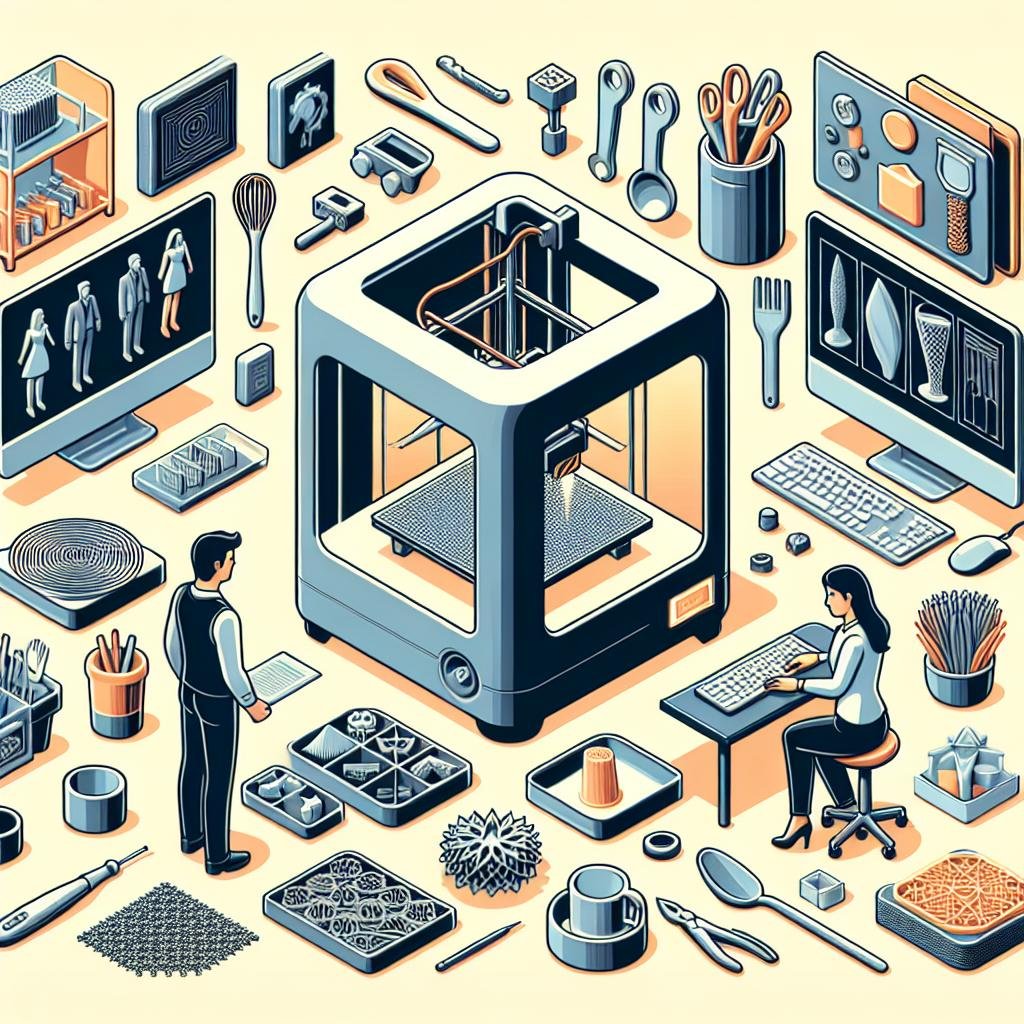
Must-Have Designs: Essential Items to Start Printing Today
Venturing into the realm of 3D printing can be both exciting and overwhelming. To help ease you into this innovative hobby, we’ve compiled a list of must-have designs that are both functional and fun to create. These essentials will not only showcase your skills but also enhance your daily life. From practical tools to household items, these designs are great starting points for any 3D printing enthusiast.
- Smartphone Stands: Keep your devices within reach with personalized stands. Customize them to fit any style or color preference.
- Cable Organizers: Say goodbye to tangled wires with versatile cable organizers. Simple to print and incredibly useful.
- Plant Pots: Give your greenery a stylish home. Print pots in various shapes and sizes to add a personal touch to your space.
| Item | Printing Time | Difficulty |
|---|---|---|
| Smartphone Stand | 2 hours | Easy |
| Cable Organizer | 1 hour | Beginner |
| Plant Pot | 3 hours | Intermediate |
These items are just the tip of the iceberg. Explore various designs to suit different needs around the home. Think beyond the basics and experiment with prints that can be customized to solve common household problems, all while adding a touch of creativity to your living space. Happy printing!
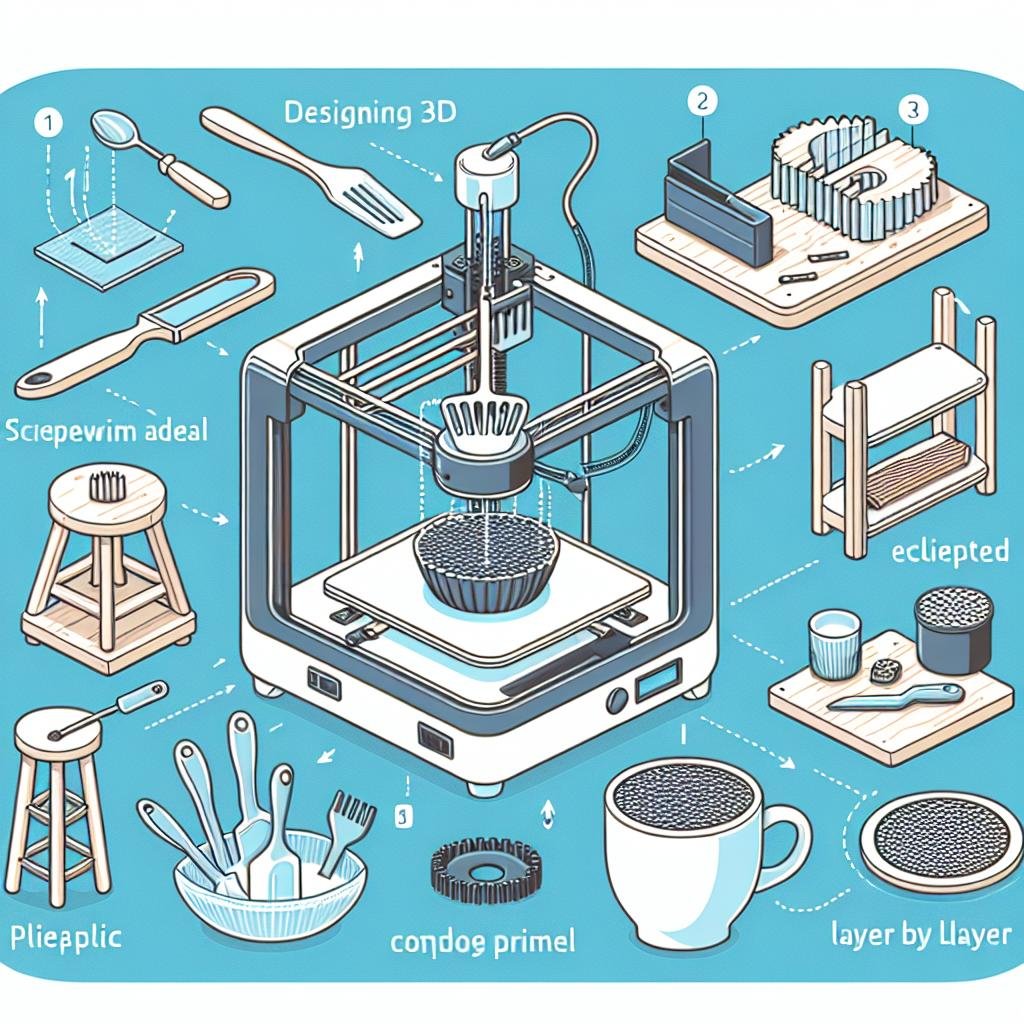
Step-by-Step Guide: From CAD Design to Finished Product
To embark on your journey of creating amazing household items with 3D printing, starting with a solid CAD design is crucial. Begin by choosing the right software for your design needs. Popular choices like Tinkercad, Fusion 360, and Blender offer a range of features for both beginners and experienced designers. When drafting your model, consider the end-use of your item—especially if it’s going to be part of daily chores. Aim for simplicity in your design to ensure structural integrity and ease of printing. Avoid overcomplications that could lead to printing errors or design flaws.
Once your CAD design is ready, it’s time to set it up for printing. Export your model in a compatible file format, typically STL or OBJ. Import this into your slicing software—Cura, PrusaSlicer, or Simplify3D are excellent choices. Configure the following settings:
- Layer Height: A finer layer height results in smoother finishes, but takes longer to print.
- Infill Density: Choose an infill pattern and density that balances strength and material usage.
- Supports: Enable supports if your model has overhangs or complex geometry.
| Setting | Recommended Value | Purpose |
|---|---|---|
| Layer Height | 0.1-0.2 mm | Smoothness |
| Infill Density | 20-40% | Strength |
| Print Speed | 50-60 mm/s | Balance of quality and time |
With these settings dialed in, your 3D printer is all set to transform your digital design into a tangible product, ready to become a part of your everyday toolbox or household collection.
Q&A
Q&A with The Tech Savvy Maker: How to 3D Print Household Items and Tools
Q: What’s the first thing I need to 3D print household items?
A: Great question! First, you need a 3D printer. It’s like the magical wand in your tech toolbox. Once you have that, you’ll need a digital model (often in the form of an STL file), which represents the item you want to print. Websites like Thingiverse or MyMiniFactory are treasure troves for these models. And don’t forget the filament – the “ink” your printer uses, typically made of PLA or ABS plastic.
Q: Do I need to be a tech wizard to get started?
A: Not at all! Think of it as learning to ride a bike. It might seem tricky at first, but with a bit of practice, you’ll be cruising. Most 3D printers come with user-friendly software and loads of online tutorials to guide you. Plus, there are heaps of community forums where you can ask for help and tips. You don’t need to summon Merlin, just a bit of curiosity and patience!
Q: What kind of household items can I actually print?
A: Oh, the possibilities are vast and delightful! Need a unique bookshelf bracket? Print it. How about a custom toothbrush holder, or a missing hook for your kitchen? Print those too! You can even make bespoke coasters, plant pots, drawer dividers, or replacement parts for broken gadgets. Your household can be filled with an array of custom, eye-catching items.
Q: Will 3D printed tools be sturdy enough for everyday use?
A: Absolutely, but it depends on the material you choose and how you print it. For most household tools, PLA and ABS filaments are sufficient. However, if you need extra durability, look into stronger materials like PETG or even metal-infused filaments. Additionally, the design and infill density – which is the internal structure of the print – play crucial roles. A well-designed wrench with a high infill can surprise you with its strength!
Q: Can I design my own items to print?
A: Yes, you can! In fact, crafting your own designs is one of the most exciting parts of 3D printing. Free software like Tinkercad is excellent for beginners, and more advanced users might explore Blender or Fusion 360. Start with simple shapes and gradually let your imagination take flight. Before you know it, you’ll be an architect of your own household wonders.
Q: What kind of maintenance does a 3D printer need?
A: Nothing too complex, don’t worry. Regularly check and clean the print bed, ensure the extruder is free from clogs, and keep an eye on your filament for any signs of wear. Lubricating the moving parts monthly and updating the printer’s firmware as needed will keep it in tip-top shape. It’s like tending a low-maintenance garden – consistent, small efforts make all the difference.
Q: Any tips for a successful print every time?
A: Indeed! Firstly, ensure your print bed is level – it’s the keystone of a good print. Secondly, manage your filament well; it should feed smoothly into the printer. Third, be patient with your settings; tinkering with temperature, speed, and infill can significantly impact the final product. Lastly, don’t be afraid of printing test pieces. They are invaluable for fine-tuning before committing to a larger project.
Q: What’s your favorite household item that you’ve printed?
A: Ah, now you’re asking the fun questions! I’d say it’s a toss-up between my custom spice rack (organized and visually pleasing) and the quirky, squid-shaped doorstop my cat loves to chase around. Each piece reminds me of the creativity and practicality 3D printing brings into daily life.
Q: Where can I learn more about 3D printing?
A: Dive into online courses, join 3D printing communities on social media, or visit local maker spaces. Websites like 3D Hubs and MakerBot offer great resources, as do many YouTube channels dedicated to beginner tutorials and advanced tips. Remember, the 3D printing world is full of enthusiasts eager to share their knowledge and passion, so don’t hesitate to jump in!
Q: Any parting words for aspiring 3D print makers?
A: Embrace the process with an open mind and a playful spirit. Mistakes are just part of the journey – each failed print teaches you something new. With creativity, patience, and a bit of experimentation, you will turn those digital dreams into tangible reality, enriching your home one layer at a time. Happy printing!
Wrapping Up
As we wrap up our deep dive into the fascinating world of 3D printing household items and tools, one thing is crystal clear: the future is now, and it’s being shaped layer by layer in the comfort of our homes. With a pinch of creativity, a dash of patience, and a sprinkle of technical know-how, you can transform mere filaments into functional pieces of art that make everyday life a bit more extraordinary.
So, dust off those blueprints, fire up your 3D printer, and let your imagination run wild. Sure, you might encounter a few hiccups along the way, but remember, every print is a step closer to becoming a homegrown inventor. Whether it’s a quirky kitchen gadget, a sleek organizer, or an essential tool, there’s nothing more satisfying than watching your digital dreams morph into tangible reality.
Thank you for taking this creative journey with us. Now, take a deep breath, hit that print button, and let the magic unfold. Happy printing!

